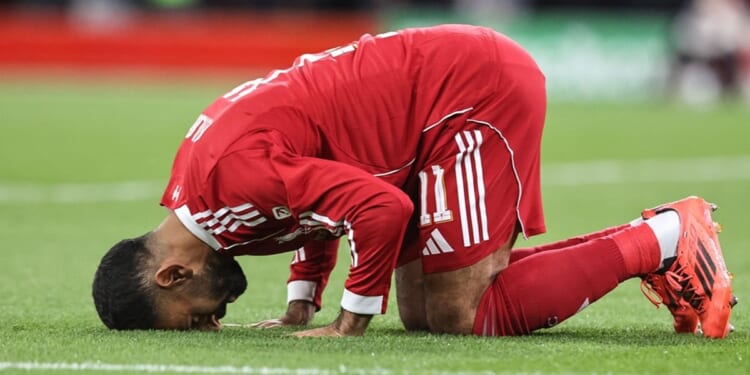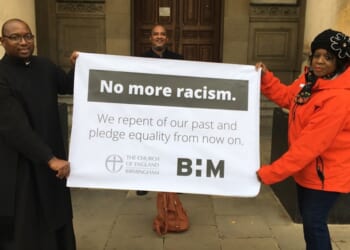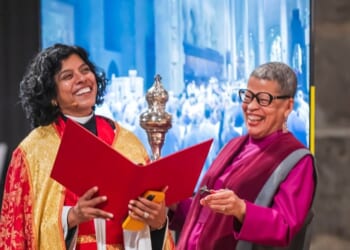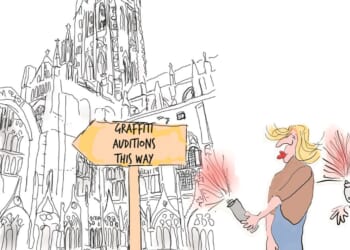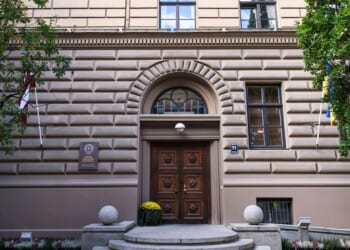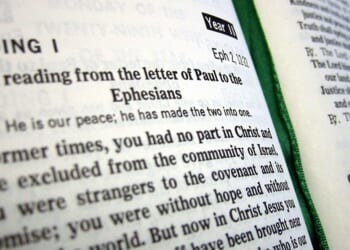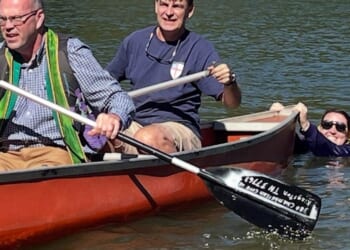IN THE aftermath of the publication of the Curriculum and Assessment Review in November — as a result of which religious education (RE) is to be part of the National Curriculum (News, 7 November, Comment 28 March) — I was dismayed to see how many responses seemed to suggest that the Church of England was therefore losing out.
Since 1944, Christian instruction has been compulsory in schools up to the age of 18. Under the 1988 Education Reform Act, other world religions were included in RE, but were very much seen as taking second place. The price of becoming core is that we will now have to share our slot on an equal footing with other world-views including — gasp! — atheist ones. Surely, it was suggested, this must signal the very end of Christianity in the UK!
At the same time, many people are deeply concerned with the rise of the far Right, and the racist rhetoric that is creeping into political discourse. This is what unites the treatment of RE in this report and a new one from Theos last week, Beyond the Classroom, which examines where people learn RE outside school.
Both, in their different ways, are trying to improve community cohesion through improved mutual understanding. The Theos report contains a devastating statistic that illustrates why this is important. In the two years after Liverpool FC signed the Muslim player Mohamed Salah, there were 18.9 per cent fewer hate crimes and a 53 per cent fall in anti-Muslim tweets among Liverpool fans. It is hard to hate your heroes.
MEANWHILE, I am worried about the argument that seems to lurk behind resistance to including world-views in the National Curriculum. It is as though the only way in which we can fill our churches were by converting children through RE lessons.
Further, this kind of thinking seems to hold that swelling our own numbers is the best way to be faithful, in line with biblical teaching about making disciples. But, in this context, it means that the power of the institutional Church is more important than community cohesion and the educational needs of young people. There certainly is a theological argument that could be made for this, but I suspect that it is not one that the national Church should feel comfortable making, unless we wish to cede this ground, too.
But do I also sense a latent worry that our faith would not win in a fair fight? These reports talk about “taught” and “caught” religious understanding. They do not trespass into the realm of proselytism and conversion. That remains our job, deo volente. I would wager that the existing and rather patchy provision of school RE has put more people off God than has tempted them to church. But I would also wager that learning about faithful religious observance in any tradition is likely to pique an interest in one’s own cultural inheritance, besides helping us all to understand one another better.
As the chair of a large group of Christian schools, I am delighted that RE will become part of the National Curriculum. All Christian schools will still be at liberty to layer on Christian instruction and formation, but, thanks to this news, every child will in future understand more about the faith and world-views that motivate their neighbours and colleagues.
THE Theos report also contains a wonderful case study of what communities themselves can do about all of this. The Bradford Faith Trail is a monthly guided tour of five different places of worship within walking distance of one another in the city centre. Delivered by volunteers from the local faith community, the trail visits a mosque, a mandir, a gurdwara, a Roman Catholic church, and the Anglican Cathedral, exploring each place of worship and its connection to Bradford’s history and community.
While the synagogue is not within walking distance, the Jewish faith is included through exploration of a historic manufacturing district established by Jewish immigrants in the 1850s.
The Faith Trail takes place on the first Saturday of every month from March to October, and has been organised for more than 15 years. It now forms part of the compulsory induction of new police officers. Doctors’ receptionists and Jobcentre workers also include the trail in their basic training. Bookings are co-ordinated by Bradford Cathedral, because it has the resources to do so. I wonder whether our other cathedrals might support something similar.
The Theos report drew on data from several areas in Britain, including the London Borough of Redbridge, where 51 per cent of the population are non-Christian. The 2021 census reported that 82 per cent of the Redbridge population were religious overall, making it one of the most religious boroughs in England and Wales.
This diversity is a rich resource, and sixth-formers there are trained to be “Ambassadors of Faith and Belief” who deliver talks in the borough’s primary schools. They are now in demand for online presentations to schools in rural areas as far away as Cumbria, where a less diverse population makes easy proximity to the lived reality of other faiths a challenge to mutual understanding.
It is still true that the Church of England runs one in four of England’s primary schools. We know that most children learn what they know about other faiths in the playground and on playdates. Parents from other faiths are often keen that their children should attend a faith school, where faith is at least taken seriously as part of daily life. For me, this is the kind of historical advantage that we should be proudly leveraging for the nation, as we do in the House of Lords, using our convening power to bring faith to the fore.
Dr Eve Poole is Executive Chair of the Woodard Corporation and writes in a personal capacity.

